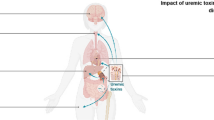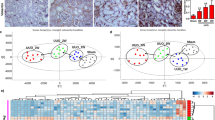Abstract
Polycyclic aromatic hydrocarbons (PAHs)/aryl hydrocarbon receptor (AhR) regulate the expression of target genes, including drug transporter genes which harbor xenobiotic response element (XRE) in their promoter regions. Thus, PAHs/AhR could alter the toxicokinetic profile of many nephrotoxic drugs, including aminoglycosides. In the current study, we investigated the expression and localization of AhR and megalin in rat kidney. Furthermore, we investigated whether AhR and its ligands could modulate the expression of megalin and consequently the gentamicin-induced nephrotoxicity (GN) in rats. Both megalin and AhR receptors are expressed in the proximal tubules of the rat kidney. Treatment with AhR agonist benzo(a)pyrene aggravated GN as indicated by a significant increase in serum creatinine, BUN, KIM1, NAGL, CD-86, and urinary albumin/creatinine ratio. On the other hand, treatment with AhR antagonist resveratrol ameliorated GN as manifested by a pronounced decrease in the aforementioned parameters. The effects of AhR ligands on GN were associated with altered expression of megalin receptor.














Similar content being viewed by others
Abbreviations
- AhR:
-
Aryl hydrocarbon receptor
- PAHs:
-
Polycyclic aromatic hydrocarbons
- XRE:
-
Xenobiotic response element
- GN:
-
Gentamicin-induced nephrotoxicity
- BaP:
-
Benzo(a)pyrene
- PTCs:
-
Proximal tubule cells
- Rv:
-
Resveratrol
- SC:
-
Subcutaneous
- IP:
-
Intraperitoneal
- h:
-
Hour
- min:
-
Minutes
- KIM1:
-
Kidney injury molecule 1
- NGAL:
-
Neutrophil gelatinase-associated lipocalin
- DMSO:
-
Dimethyl sulfoxide
- BUN:
-
Blood urea nitrogen
References
Abbas SY, Nogueira MI, Azmitia EC (2007) Antagonist-induced increase in 5-HT1A-receptor expression in adult rat hippocampus and cortex. Synapse 61:531–539. https://doi.org/10.1002/syn.20399
Adedara IA, Daramola YM, Dagunduro JO, Aiyegbusi MA, Farombi EO (2015) Renoprotection of kolaviron against benzo (A) pyrene-induced renal toxicity in rats. Ren Fail 37:497–504. https://doi.org/10.3109/0886022X.2015.1006085
Al Dera HS (2016) Protective effect of resveratrol against aluminum chloride induced nephrotoxicity in rats. Saudi Med J 37:369–378. https://doi.org/10.15537/smj.2016.4.13611
Balakumar P, Rohilla A, Thangathirupathi A (2010) Gentamicin-induced nephrotoxicity: do we have a promising therapeutic approach to blunt it? Pharmacol Res 62:179–186. https://doi.org/10.1016/j.phrs.2010.04.004
Brightling C, Berry M, Amrani Y (2008) Targeting TNF-alpha: a novel therapeutic approach for asthma. J Allergy Clin Immunol 121:5–10; quiz 11-12. https://doi.org/10.1016/j.jaci.2007.10.028
Cabezas F, Farfán P, Marzolo M-P (2019) The down regulation of megalin/LRP2 by transforming growth factor beta (TGF-ß1) is mediated by the SMAD2/3 signalling pathway. J bioRxiv:553974
Casper RF, Quesne M, Rogers IM, Shirota T, Jolivet A, Milgrom E, Savouret J-F (1999) Resveratrol has antagonist activity on the aryl hydrocarbon receptor: implications for prevention of dioxin toxicity. J Mol Pharmacol 56:784–790
Christensen EI, Birn H (2002) Megalin and cubilin: multifunctional endocytic receptors. Nat Rev Mol Cell Biol 3:256–266. https://doi.org/10.1038/nrm778
Christensen EI, Nielsen R (2007) Role of megalin and cubilin in renal physiology and pathophysiology. In: Amara SG (ed) Reviews of physiology, biochemistry and pharmacology. Springer Berlin Heidelberg, Berlin, pp 1–22. https://doi.org/10.1007/112_0604
Dagil R, O'shea C, Nykjær A, Bonvin AM, Kragelund BB (2013) Gentamicin binds to the megalin receptor as a competitive inhibitor using the common ligand binding motif of complement type repeats insight from the NMR structure of the 10th complement type repeat domain alone and in complex with gentamicin. J Biol Chem 288:4424–4435
De S, Kuwahara S, Saito A (2014) The endocytic receptor megalin and its associated proteins in proximal tubule epithelial cells. 4. https://doi.org/10.3390/membranes4030333
Degner SC, Kemp MQ, Hockings JK, Romagnolo DF (2007) Cyclooxygenase-2 promoter activation by the aromatic hydrocarbon receptor in breast cancer mcf-7 cells: repressive effects of conjugated linoleic acid. Nutr Cancer 59:248–257. https://doi.org/10.1080/01635580701485585
Degner SC, Papoutsis AJ, Selmin O, Romagnolo DF (2009) Targeting of aryl hydrocarbon receptor-mediated activation of cyclooxygenase-2 expression by the indole-3-carbinol metabolite 3,3′-diindolylmethane in breast cancer cells. J Nutr 139:26–32. https://doi.org/10.3945/jn.108.099259
Dogan M et al (2017) Protective role of misoprostol in prevention of gentamicin ototoxicity. Int J Pediatr Otorhinolaryngol 96:140–144. https://doi.org/10.1016/j.ijporl.2017.03.023
Drozdzik A, Dziedziejko V, Kurzawski M (2014) IL-1 and TNF-alpha regulation of aryl hydrocarbon receptor (AhR) expression in HSY human salivary cells. Arch Oral Biol 59:434–439. https://doi.org/10.1016/j.archoralbio.2014.02.003
Falahatpisheh M, Donnelly K, Ramos K (2001) Antagonistic interactions among nephrotoxic polycyclic aromatic hydrocarbons. J Toxicol Environ Health Part A 62:543–560
Gornall AG, Bardawill CJ, David MM (1949) Determination of serum proteins by means of the biuret reaction. J Biol Chem 177:751–766
Kataria A, Trasande L, Trachtman H (2015) The effects of environmental chemicals on renal function. Nat Rev Nephrol 11:610–625. https://doi.org/10.1038/nrneph.2015.94
Kobayashi S, Okamoto H, Iwamoto T, Toyama Y, Tomatsu T, Yamanaka H, Momohara S (2008) A role for the aryl hydrocarbon receptor and the dioxin TCDD in rheumatoid arthritis. Rheumatology (Oxford) 47:1317–1322. https://doi.org/10.1093/rheumatology/ken259
Krupp M, Lane MD (1981) On the mechanism of ligand-induced down-regulation of insulin receptor level in the liver cell. J Biol Chem 256:1689–1694
Le Vee M, Jouan E, Lecureur V, Fardel O (2016) Aryl hydrocarbon receptor-dependent up-regulation of the heterodimeric amino acid transporter LAT1 (SLC7A5)/CD98hc (SLC3A2) by diesel exhaust particle extract in human bronchial epithelial cells. Toxicol Appl Pharmacol 290:74–85
Lee PS, Chiou YS, Ho CT, Pan MH (2018) Chemoprevention by resveratrol and pterostilbene: targeting on epigenetic regulation. Biofactors 44:26–35. https://doi.org/10.1002/biof.1401
Lee MC, Cheng KJ, Chen SM, Li YC, Imai K, Lee CM, Lee JA (2019) A novel preventive mechanism of gentamicin-induced nephrotoxicity by atorvastatin. Biomed Chromatogr 33:e4639. https://doi.org/10.1002/bmc.4639
Mahringer A, Bernd A, Miller DS, Fricker G (2019) Aryl hydrocarbon receptor ligands increase ABC transporter activity and protein expression in killifish (Fundulus heteroclitus) renal proximal tubules. Biol Chem. https://doi.org/10.1515/hsz-2018-0425
Mao C et al (2018) Aryl hydrocarbon receptor activated by benzo (a) pyrene promotes SMARCA6 expression in NSCLC. Am J Cancer Res 8:1214–1227
Montgomery JH, Crompton TR (2017) Environmental chemicals desk reference. CRC Press, Boca Raton. https://doi.org/10.1201/9781315169026
Mulero-Navarro S, Fernandez-Salguero PM (2016) New trends in aryl hydrocarbon receptor biology. Front Cell Dev Biol 4:45. https://doi.org/10.3389/fcell.2016.00045
Nagai J, Takano M (2014) Entry of aminoglycosides into renal tubular epithelial cells via endocytosis-dependent and endocytosis-independent pathways. Biochem Pharmacol 90:331–337
Nagai J, Tanaka H, Nakanishi N, Murakami T, Takano M (2001) Role of megalin in renal handling of aminoglycosides. Am J Physiol Renal Physiol 281:F337–F344. https://doi.org/10.1152/ajprenal.2001.281.2.F337
Quirós Y, Blanco-Gozalo V, Sanchez-Gallego JI, López-Hernandez FJ, Ruiz J, de Obanos MPP, López-Novoa JM (2016) Cardiotrophin-1 therapy prevents gentamicin-induced nephrotoxicity in rats. J Pharmacol Res 107:137–146
Rengarajan T, Rajendran P, Nandakumar N, Lokeshkumar B, Rajendran P, Nishigaki I (2015) Exposure to polycyclic aromatic hydrocarbons with special focus on cancer. J Asian Pac J Trop Biomed 5:182–189
Revel A, Raanani H, Younglai E, Xu J, Han R, Savouret JF, Casper RF (2001) Resveratrol, a natural aryl hydrocarbon receptor antagonist, protects sperm from DNA damage and apoptosis caused by benzo(a)pyrene. Reprod Toxicol 15:479–486. https://doi.org/10.1016/s0890-6238(01)00149-6
Revel A et al (2003) Resveratrol, a natural aryl hydrocarbon receptor antagonist, protects lung from DNA damage and apoptosis caused by benzo[a]pyrene. J Appl Toxicol 23:255–261. https://doi.org/10.1002/jat.916
Rothhammer V, Quintana FJ (2019) The aryl hydrocarbon receptor: an environmental sensor integrating immune responses in health and disease. Nat Rev Immunol 19:184–197. https://doi.org/10.1038/s41577-019-0125-8
Sahu BD et al (2014) Naringin ameliorates gentamicin-induced nephrotoxicity and associated mitochondrial dysfunction, apoptosis and inflammation in rats: possible mechanism of nephroprotection. Toxicol Appl Pharmacol 277:8–20. https://doi.org/10.1016/j.taap.2014.02.022
Santana Machado T, Cerini C, Burtey S (2019) Emerging roles of aryl hydrocarbon receptors in the altered clearance of drugs during chronic kidney disease. Toxins (Basel) 11:209. https://doi.org/10.3390/toxins11040209
Schmitz C, Hilpert J, Jacobsen C, Boensch C, Christensen EI, Luft FC, Willnow TE (2002) Megalin deficiency offers protection from renal aminoglycoside accumulation. J Biol Chem 277:618–622. https://doi.org/10.1074/jbc.M109959200
Tomblin JK, Arthur S, Primerano DA, Chaudhry AR, Fan J, Denvir J, Salisbury TB (2016) Aryl hydrocarbon receptor (AHR) regulation of L-type amino acid transporter 1 (LAT-1) expression in MCF-7 and MDA-MB-231 breast cancer cells. Biochem Pharmacol 106:94–103. https://doi.org/10.1016/j.bcp.2016.02.020
Unterwald EM, Howells RD (2009) Upregulation of opioid receptors. In: Dean RL, Bilsky EJ, Negus SS (eds) Opiate receptors and antagonists. Humana Press, Totowa, pp 19–44. https://doi.org/10.1007/978-1-59745-197-0_2
Vart P et al (2016) Urine albumin-creatinine ratio versus albumin excretion for albuminuria staging: a prospective longitudinal cohort study. Am J Kidney Dis 67:70–78. https://doi.org/10.1053/j.ajkd.2015.05.025
Vogel CF et al (2014) Cross-talk between aryl hydrocarbon receptor and the inflammatory response: a role for nuclear factor-kappaB. J Biol Chem 289:1866–1875. https://doi.org/10.1074/jbc.M113.505578
Wang S, Abouzied M, Smith D (1996) Proteins as potential endpoint temperature indicators for ground beef patties. J Food Sci 61:5–7
Wen L, Zhao Z, Xiao J, Wang Z, He X, Birn H (2018) Renal miR-148b is associated with megalin down-regulation in IgA nephropathy. Biosci Rep 38. https://doi.org/10.1042/BSR20181578
Wolff S, Harper PA, Wong JM, Mostert V, Wang Y, Abel J (2001) Cell-specific regulation of human aryl hydrocarbon receptor expression by transforming growth factor-beta(1). Mol Pharmacol 59:716–724. https://doi.org/10.1124/mol.59.4.716
Yarijani ZM, Najafi H, Hamid Madani S (2016) Protective effect of crocin on gentamicin-induced nephrotoxicity in rats Iran. J Basic Med Sci 19:337–343
Zhang W et al (2014) Protective effect of resveratrol on arsenic trioxide-induced nephrotoxicity in rats. Nutr Res Pract 8:220–226. https://doi.org/10.4162/nrp.2014.8.2.220
Acknowledgments
The authors would like to thank Professor Ahmed M. Ibrahim Mansour, Professor of Pharmacology and Toxicology, Faculty of Pharmacy (Boys), Al-Azhar University, for facilitating the work; great gratitude to boards of directors of EPICO Pharmaceuticals Company for their kind help and support; and deepest thanks to Dr. Sayed Abdel Raheem, Ass-Professor of Histopathology, Faculty of Medicine, Al-Azhar University, Cairo.
Author information
Authors and Affiliations
Corresponding author
Ethics declarations
Conflict of interest
The authors declare that they have no conflict of interest.
Additional information
Responsible editor: Mohamed Abdel-Daim
Publisher’s note
Springer Nature remains neutral with regard to jurisdictional claims in published maps and institutional affiliations.
Electronic supplementary material
ESM 1
(DOCX 77105 kb)
Rights and permissions
About this article
Cite this article
Mokhtar, M.M., Khidr, E.G., Shaban, H.M. et al. The effect of aryl hydrocarbon receptor ligands on gentamicin-induced nephrotoxicity in rats. Environ Sci Pollut Res 27, 16189–16202 (2020). https://doi.org/10.1007/s11356-020-08073-z
Received:
Accepted:
Published:
Issue Date:
DOI: https://doi.org/10.1007/s11356-020-08073-z




